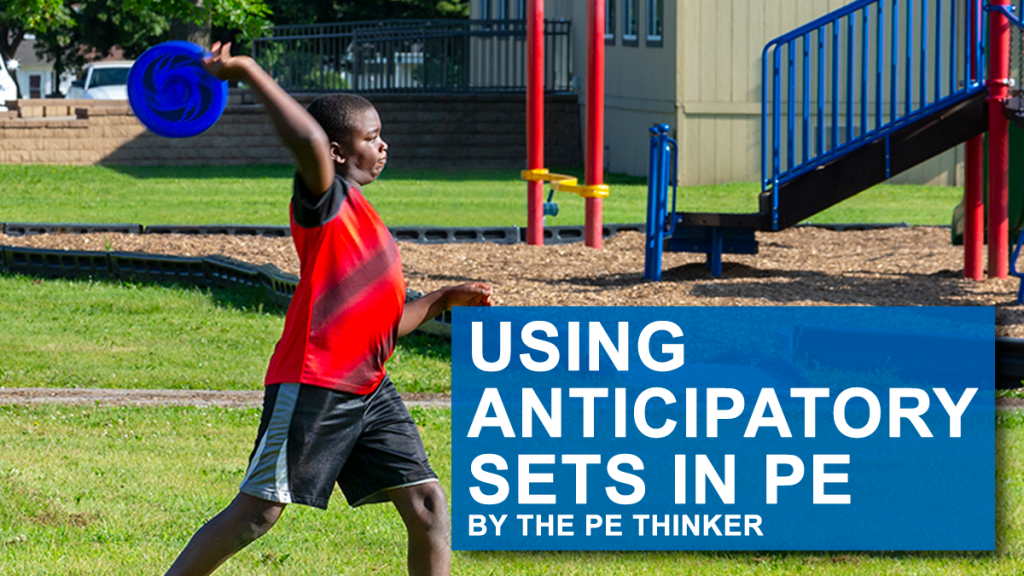
As teachers, we understand the importance of capturing the attention of our students and preparing them for learning, especially at the beginning of a lesson. One method that can help achieve these goals is by using anticipatory sets.
Anticipatory sets (also known as lesson hooks or leads) are short, attention-getting activities that are used by teachers to grab the attention of their students, activate prior knowledge and prepare students to learn new information.
As an elementary physical education teacher, I have used a variety of anticipatory sets to introduce new activities, skills, or concepts – including video demonstrations and highlight clips, pictures, or group discussions to “hook” the interest of students. I have found that in an elementary setting, a physical education teacher has a unique opportunity to be creative with this practice. Here are a couple of additional anticipatory set ideas to try to grab attention, activate prior knowledge, and prepare to learn more…
Using the Wrong Equipment
This method is sure to spark discussion and laughs! Example – While introducing the concept of bouncing/dribbling, the teacher begins to demonstrate the skill using a football. After several failed attempts (and a laughing student audience), the teacher can begin to ask questions, leading students to answer why a football would not be the best choice (shape) to practice bouncing/dribbling. The teacher may then pull out a “round” ball (baseball) to try, again failing and causing students to explain why a baseball won’t work either. The teacher can then use an appropriate ball for bouncing/dribbling, enhancing student understanding and connection of the correct shape, size, and material needed to bounce and dribble!
Using Equipment Incorrectly
In this method, the teacher will pick out students and explain (off to the side) the objective of not using the equipment correctly before the demonstration. Example – While explaining the task of practicing tossing and catching a frisbee disc with a partner, the teacher has two students demonstrate working on throwing and catching the disc back and forth in front of the other students. Instead of using a proper throwing motion for a disc, the students attempt to use an overhand throwing motion, causing the disc to fly incorrectly or not to the partner. From this, the teacher can lead a student discussion as to why that throwing motion won’t work for getting the disc to fly, and what the correct form should look like and why!
Act It Out
Using a charades-like method, selected students will act out an activity, skill, or concept while using no equipment in front of their classmates (soccer, basketball, football, softball/baseball, or bowling). This quick hook will grab student attention and can spark immediate discussion and excitement before formally introducing what the students will be working on.
I hope you have found a few takeaways or sparked new ideas for yourself to use in your own teaching setting!





One Response
Love these ideas and your wacky ways of creating interest with your students. Good stuff!! Please keep up your terrific work!!